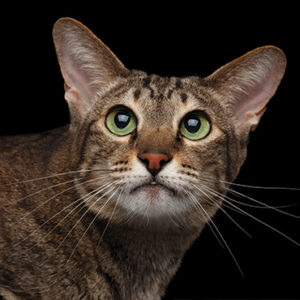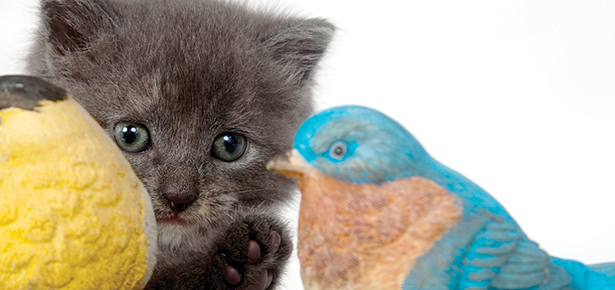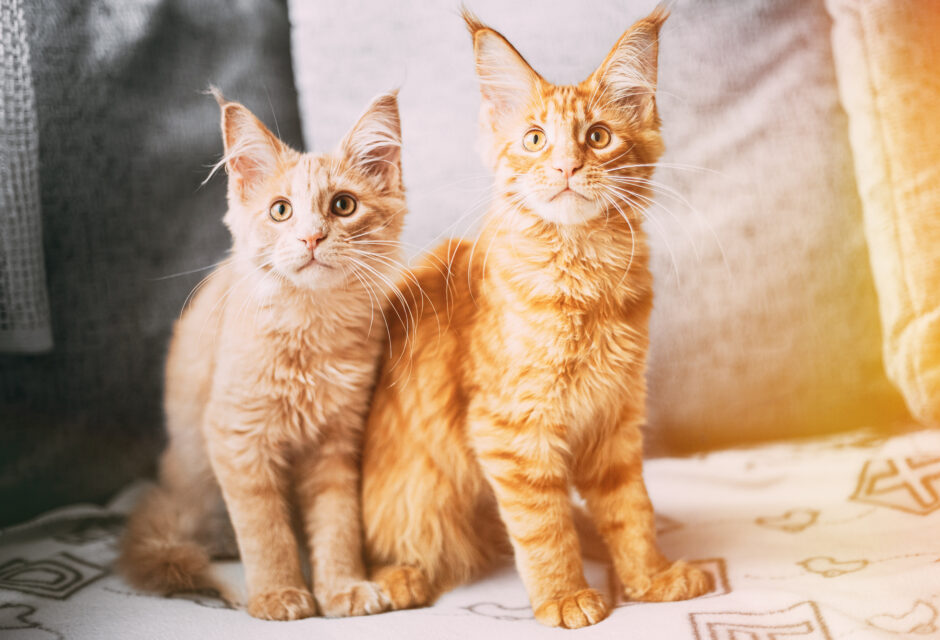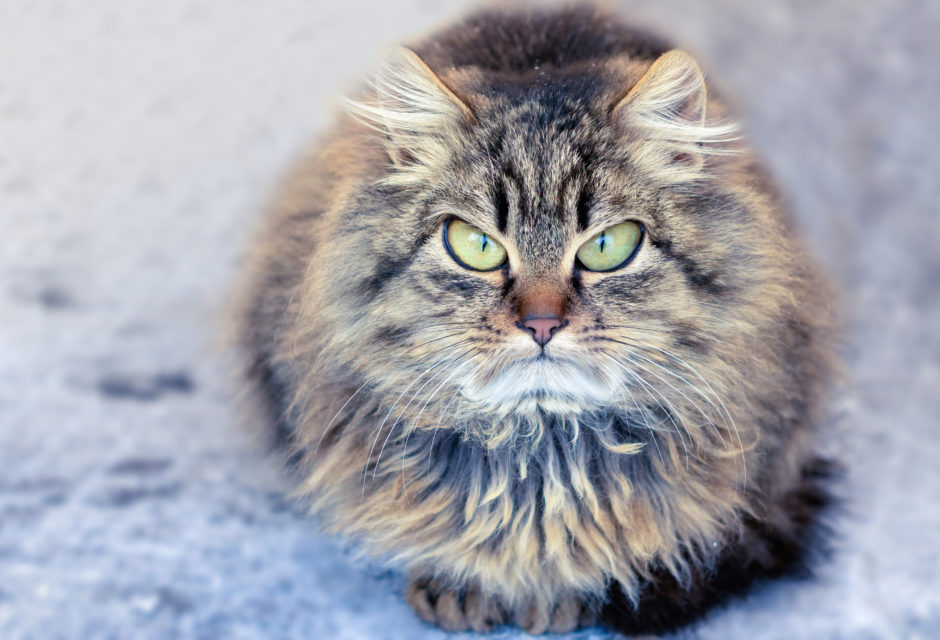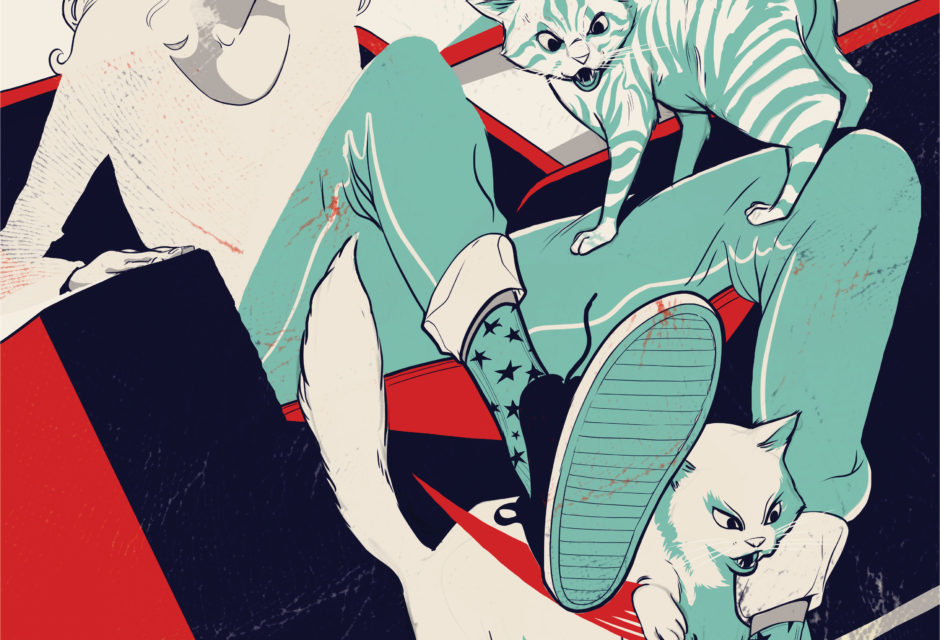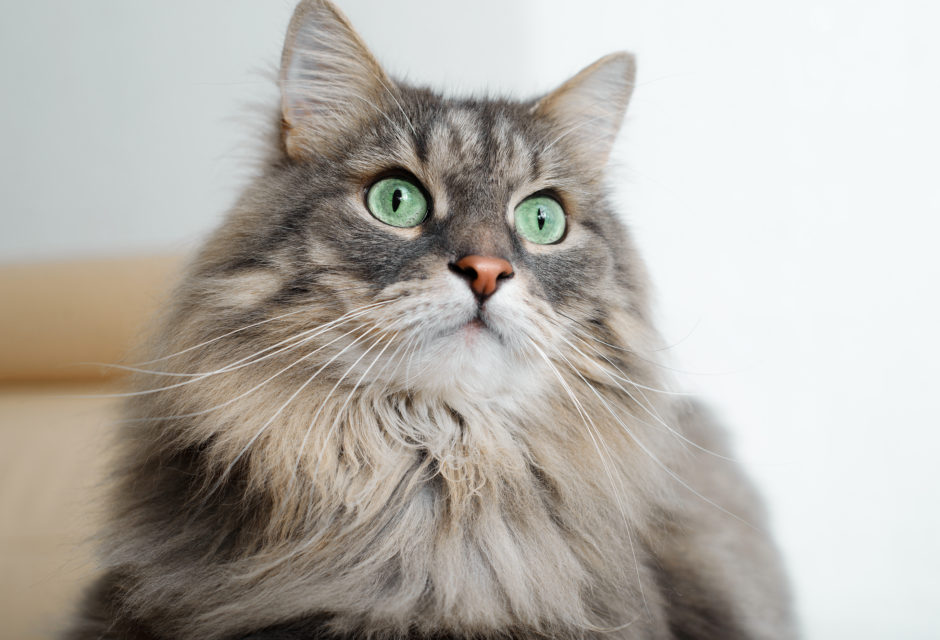
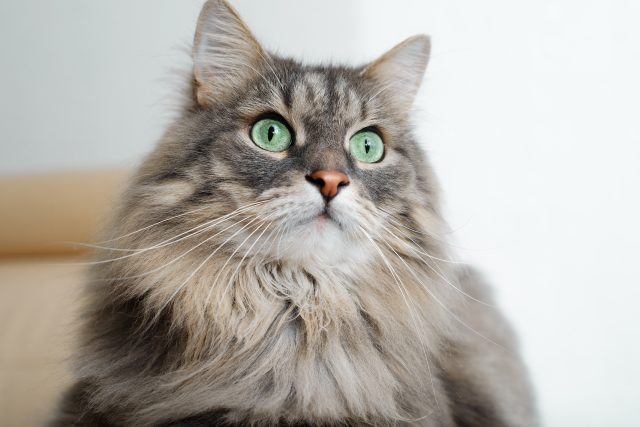
Compulsive Disorders in Cats
How to handle your cat’s compulsive behaviour
By: Mieshelle Nagelschneider, Cat Behaviourist, host of the TV show My Cat From Hell, and author of the cat behaviour science book, The Cat Whisperer
Last Updated:
Cats can become frustrated and stressed for the same reasons people do—not getting something they want or not being able to do something they want to do. In response to these thwarted desires and the resulting stress, cats can develop compulsive behaviours. These compulsive responses are often based on behaviours that are already part of the cat’s natural repertoire. Over-grooming, also known as psychogenic alopecia, and chewing on or ingesting non-food items are the most common compulsive behaviours in cats. For example, some cats will over-groom or pull their fur out to help reduce the stress of their owners leaving for the day. Grooming is a natural behaviour that cats perform to alleviate moments of stress, but when the stress is too great or consistent, over-grooming can surface. Compulsive behaviours like over-grooming are abnormal because they are performed repetitively, out of context, with no apparent goal, and in ways that can sometimes be destructive to the cats themselves and the environment they live in. At The Cat Behavior Clinic, many cats I’ve worked with will lick all the fur off their stomachs leaving only a fine skimming of peach fuzz.
“The main cause of compulsive behaviour in cats is stress, especially the kind of stress that cats experience when they feel conflicted between two opposing courses of action.” An example of this kind of conflict-caused stress is your cat may both want to run away from another cat and want to confront him.”—excerpt from The Cat Whisperer
Compulsive behaviours may also develop because a cat was weaned too early, or because he’s experiencing stress in the form of general anxiety, frustration, boredom or separation anxiety—especially if the stressors recur frequently or persist over an extended period of time.
Instead of overgrooming, some cats may chew on, and even ingest, non-food items to help cope with separation anxiety, a new cat or dog in the house, or not being able to get outside to chase after the birds he sees through the window. Chewing or sucking behaviour on non-food is oftxen called “wool sucking” or “wool chewing,” but includes not just wool, but paper, cotton, plastic, and sometimes other more surprising materials. Ingesting non-food items is called “pica.” This behavior can be especially dangerous because cats can ingest entire socks and large pieces of dishtowels leading to serious health issues that can require surgery. Besides stress, genetic predisposition can cause these compulsive behaviors to develop.
“Compulsive behaviours may also develop because a cat was weaned too early, or because he’s experiencing stress in the form of general anxiety, frustration, boredom or separation anxiety—especially if the stressors recur frequently or persist over an extended period of time.”
If you allow the stress to continue in your cat’s environment, other totally unrelated stressors can set off the compulsive behaviour. In some long-term stressful situations, cats can even perform the compulsive behaviour when no stress is present.
Behaviour Strategies to Help Address Your Cat’s Stress and Compulsive Behaviour
Act Quickly: Compulsive behaviours are a serious matter. If you wait too long, the behaviour can be difficult to eliminate. To be sure the behaviour is not stemming from a medical issue, have your veterinarian examine your cat.
Remove Items: If possible, make sure the non-food items your cat is chewing on or ingesting are out of reach. You will then want to replace these items with a safe substitute like food puzzles or timed feeders or other cat-friendly products. This can help focus the chewing or ingesting behaviour elsewhere.
Remove or Reduce Stressors: It’s very important to remove the stressors from your cat’s life whenever possible. Sometimes certain stressors cannot be removed. Other animals in the home or you needing to leave for work each day are just two examples. In this case you can help the cat manage the stress in other ways to help eliminate the compulsive behaviour. Also, do not reprimand your cat. This can create more stress and result in the continuing of the compulsive behaviour.

Offer Play Therapy: If you see signs that your cat is about to the perform the behaviour, distract him by playing with him using either an interactive toy that you maneuver, or offer him a battery-operated toy. In addition to this, you also need to play with your cat twice a day. Wand toys are often one of the best choices to adequately trigger and satisfy your cat’s prey drive and reduce stress. If your cat has already begun the compulsive behaviour, do not begin playing with him at that time or you can reinforce the unwanted behaviour.
Transform Your Cat’s Environment: Add a wide array of interesting stimuli to your cat’s environment to reduce stress and minimize pent-up tension. Friendly pheromone products, food and treat puzzles, multiple feedings each day instead of only twice a day feedings, cat trees, cat scratchers, fish tanks, DVD’s made for cats, climbing frames, cat tunnels, window perches—all of these can help focus your cat on new activities and help reduce stress. An enriching environment that not only physically wears him out, but also mentally wears him out can be one of the most effective strategies. One of the clinic’s favorite food or treat puzzles is the Trixie 5-in-1 Activity Center, but there are many others available at pet stores and online.
Need more help? You can schedule a phone or video consultation with author and Cat Behaviorist Mieshelle Nagelschneider by visiting thecatbehaviorclinic.com
And be sure to check out these Modern Cat-approved problem-solving products to help keep our feline companions healthy and happy!
Join the newsletter and never miss out on cat content again!
"*" indicates required fields
By clicking the arrow, you agree to our web Terms of Use and Privacy & Cookie Policy. Easy unsubscribe links are provided in every email.





